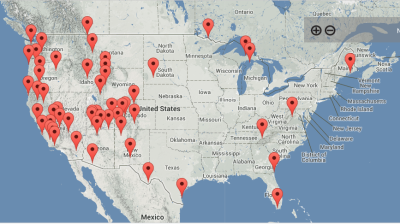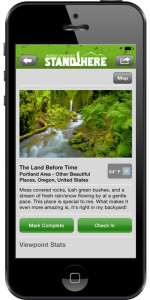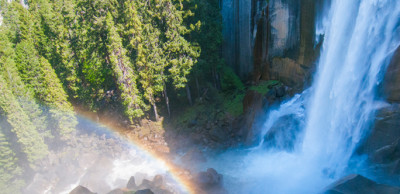As you reach the top of the hill, you see the sun turn the leaves of the trees to tiny emeralds. The filtered light illuminates the cool waterfall ahead with the magnificent warm-colored stones worn smooth from the water and for a moment, your breath catches as you gaze at this perfect spot. There is nothing quite like the natural beauty of the wilderness, and such sights are the reason and reward for many hikers who explore the wild areas of the world. While sometimes the best views are found by accident, others are not.
Introducing the Stand Here app, a hiking companion app designed to help hikers find and protect the most fantastic spots in the world. Available only on iTunes, the app is free and includes a number of functions to help hikers find their ways to the most wondrous spots in the U.S. and track their way safely back. Created by acclaimed photographer Rodney Lough Jr., the app has been about six years in the making and was released on August 8, 2014.
“The goal is to identify beautiful places, help educate people on why they are special and get people to stop and stand there. To have that moment of awe that takes your breath away,” Lough said. “Then we can understand why we need to protect these places.”
 There are currently more than 400 spots mapped in the U.S. and Canada and an update slated to be released in the next couple of weeks will allow users to help expand the app by creating and suggesting trails.
There are currently more than 400 spots mapped in the U.S. and Canada and an update slated to be released in the next couple of weeks will allow users to help expand the app by creating and suggesting trails.
“This was an enormous project and we are hoping that people will help us find and identify the most beautiful places all over the planet,” Lough said enthusiastically. The submitting and approval process isn’t going to be too complicated, and Lough said he hoped that they would be able to collect trails not only in the U.S. and Canada, but all around the world.
The app is free to download and comes with one free location package. Additional packages can be purchased for $0.99, but are not necessary to use the app. However, for every location purchased, 10% of the purchase is donated back to the location of the add-on. This way, Lough explained, the more visited locations will get that much more protection.
Here is a breakdown of the free features and the features you can get with each $0.99 location:
Free Features Paid Features
- Park information
- Member Reviews
- Member Photos
- Links for local weather
- Local attraction info (shopping, restaurants, other attractions)
- Local guide info (getting there, parking, reservations)
- Best season to visit location
- Guide to donating to the location
- Ability to create your own trails
- Basic camera with geotagging
- Community access
- Guided trail information
- Check In to trail (if within 50 ft.)
- Driving directions to trail
- Text info on hiking the trail (like a written guide to the best spots)
- GPS coordinates
- Field notes
- Track speed, time, distance, elevation, etc
- Best time of day to visit
 While not required to use the app, the paid trails look like they are worth it not only to donate to a good cause but to better enjoy some of the picturesque locations. Eventually, Lough said they intend to integrate social media into the app so that users can share their routes, trail statistics and photos across social platforms in addition to the Stand Here community, but that update is still in the works.
While not required to use the app, the paid trails look like they are worth it not only to donate to a good cause but to better enjoy some of the picturesque locations. Eventually, Lough said they intend to integrate social media into the app so that users can share their routes, trail statistics and photos across social platforms in addition to the Stand Here community, but that update is still in the works.
But, as with all things, Stand Here has had its number of skeptics. Many people, Lough said, questioned how you could protect a place by sending people there. But Lough said the damage is already happening. Hiding these beautiful locations isn’t going to help conserve them–but education will. It’s about showing off the beauty of nature to inspire people to want to protect it rather than hiding away the best the Earth has to offer.
“The whole place is beautiful, and it’s about appreciating that. And once you see it, you are going to want to protect it so you can share it,” Lough said.

